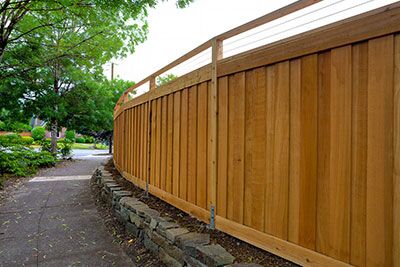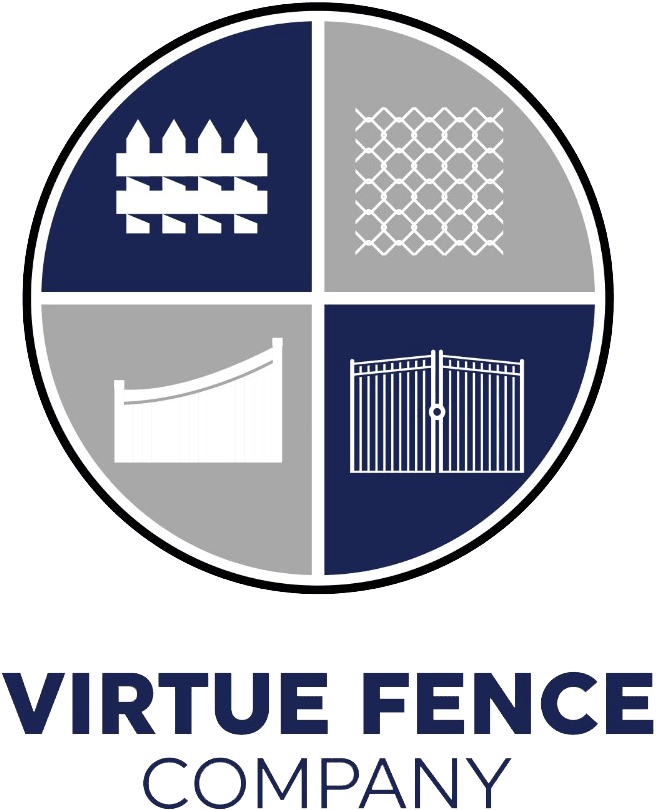What’s The Best Fence Style For Fences For Sloped Yards?

Building fences for sloped yards brings challenges that flat landscapes do not present. A slope changes how fence posts sit, how panels align, and how the finished structure appears. Homeowners often ask about the best fence for sloped yards that balances strength, privacy, and visual appeal.
Fences on sloped yards require careful planning, proper methods, and the right style for the landscape. A well-chosen approach allows the fence to improve both security and curb appeal while blending with the natural terrain.
Understanding the Challenges of Sloped Yards
A sloped property often has uneven ground, shifting soil, and drainage concerns. These conditions impact how long a fence will last and how well it performs. If installed incorrectly, gaps form under panels, posts may lean, and stability weakens. Choosing a suitable fence design can prevent these problems.
A yard with a mild incline may support several installation techniques. However, steeper yards need more tailored solutions. Fence lines must adapt to the incline without looking awkward or unstable. Each approach carries benefits and limits, so understanding them helps homeowners make informed decisions.
The Main Installation Methods for Fences on Sloped Yards
Before choosing materials or design features, the installation method should be considered first. The method sets the foundation for how the fence interacts with the slope.
- Stepped Fencing
Stepped fencing is one of the most common methods used on sloped ground. Fence panels rise in steps, much like a staircase. This approach works well on medium to steep slopes, keeping each panel level. While it creates visible height changes along the line, it maintains a consistent top level.
The gaps under panels can sometimes be larger in stepped fencing. These gaps matter if the yard requires full containment for pets or small children. Kickboards or custom adjustments can close those spaces while preserving the stepped look.
- Racked or Sloped Fencing
Racked fencing adjusts to the angle of the ground. Instead of level panels, the fence follows the slope’s incline. This method gives a smooth appearance that mirrors the terrain. It is often used for picket fences or styles where small adjustments between pickets do not impact strength.
This option works best for gradual slopes. On steep inclines, panels can appear skewed or stretched. For moderate grades, it is one of the most visually appealing methods.
- Retaining Wall with Fence on Top
Some slopes require more structural support than fencing alone can offer. In those cases, a retaining wall paired with a fence becomes the solution. The retaining wall manages soil movement and levels out part of the property. A fence installed on top of the wall handles security and privacy.
This method often requires more planning and resources, but it delivers both stability and a clean appearance. Homeowners also gain extra use of flat yard space near the wall.
- Hybrid Methods
Not all yards have one consistent slope. Many properties have rolling terrain or sections that shift from steep to mild. In such cases, hybrid methods mix stepped and racked fencing, or combine wall sections with standard panels. This blended approach allows the fence line to transition smoothly between changing grades.
Choosing the Best Fence for Sloped Yards by Material
The method is only one part of the process. Material choice also matters when installing fences on sloped yards. Some materials adapt better to uneven ground and soil pressure.
- Wood Fencing
Wood remains one of the most flexible options for sloped yards. Contractors can cut boards to match specific ground angles, making it easier to adapt to unusual terrain. Styles such as shadowbox, board-on-board, or privacy panels can all be adjusted for stepped or racked installation.
The drawback is that wood needs care. Exposure to moisture on sloped ground may shorten its lifespan unless the wood is treated. Still, for homeowners wanting a traditional appearance, wood offers a reliable option that adapts well.
- Vinyl Fencing
Vinyl fences are popular for their low upkeep and long life. For sloped yards, vinyl panels often use a racked installation method. The flexible design of vinyl pickets allows them to angle slightly with the slope.
For steeper yards, stepped vinyl may be the better option. Homeowners gain the clean look of vinyl without heavy maintenance. Regular cleaning is usually enough to maintain its appearance.
- Aluminum Fencing
Aluminum fences adapt well to slopes because their panels are often designed for racking. This allows the rails to angle while keeping pickets vertical. The result is a smooth line that follows the slope.
Aluminum is lightweight yet strong, making it suitable for security and decorative purposes. It does not rust, which is important in areas with wet soil or heavy rain. For homeowners wanting an open, elegant design, aluminum works well on uneven ground.
- Chain Link Fencing
Chain link is one of the most adaptable materials for sloped yards. Installers can stretch mesh to follow the angle of the terrain without creating major gaps. It is also cost-effective and durable.
While chain link may not offer the same level of privacy as wood or vinyl, privacy slats can be added. For functional boundaries, especially on large sloped properties, chain link remains a practical choice.
Visual Impact of Different Styles
Beyond performance, fences on sloped yards must also look appealing. Poorly matched styles may appear uneven or out of place. The right design enhances both the yard and the home.
A stepped fence creates a structured look that suits modern landscapes. It emphasizes order and clean lines. Racked fencing, by contrast, blends into the slope and appears natural. It suits more relaxed or traditional settings.
Adding a retaining wall with fencing introduces a layered effect. This approach not only manages soil but also creates a bold statement. Decorative finishes, such as lattice tops, can soften the look while still maintaining height.
The style should reflect the homeowner’s goals. A family with pets may focus on containment, while another may prioritize appearance. Selecting a design that addresses both need and look results in long-term satisfaction.
Drainage and Soil Considerations
Fences for sloped yards do more than mark boundaries. They must also handle the natural flow of water. Slopes direct rain runoff downhill, which can impact posts and panels. If drainage is ignored, soil erosion may weaken support over time.
Proper installation involves placing posts at the right depth and choosing materials that can handle wet soil. Gravel or concrete at the base of posts helps manage moisture. Kickboards may also prevent soil contact with panels.
These steps protect the fence’s stability and extend its lifespan. A thoughtful plan at the start avoids costly fixes later.
Practical Design Ideas for Sloped Yards
A sloped yard does not need to limit design creativity. With the right planning, a fence can look both practical and attractive. Homeowners often choose styles that highlight the natural flow of the land instead of fighting against it.
One popular idea is combining short retaining walls with stepped fences. This approach creates a tiered effect that looks neat and organized. It also helps balance privacy with open yard space. Another option is using different heights of fencing in different sections of the slope. A tall privacy fence may work at the bottom of a slope, while a shorter picket style suits the top.
Decorative accents also enhance the finished look. Lattice tops, post caps, or mixed materials give personality to a fence line. These touches make the fence feel like part of the landscape rather than an afterthought.
Maintenance Tips for Fences on Sloped Yards
Every fence needs care, but slopes can increase wear over time. Rainwater flows more quickly down inclines, so soil and moisture often collect around posts. Regular inspection helps spot weak spots before they become serious problems.
For wood fences, sealing or staining protects against water damage. Vinyl fences benefit from routine washing to clear dirt buildup from wet soil. Aluminum fencing usually requires less work but should still be checked for loose fasteners. Chain link fences hold up well but may shift slightly if the soil moves on steep slopes.
Proper drainage makes a major difference. Keeping the base of the fence clear of debris allows water to flow instead of pooling. Simple steps like adding gravel near posts can protect them for years.
Balancing Function and Appearance
The best fence for sloped yards balances both function and appearance. A fence that looks strong but leaves gaps may not work for families with pets. A stylish design that ignores drainage might fail after heavy rain. A successful project always blends durability with a design that matches the home.
Property owners should think about what they need most from the fence. Privacy, security, pet safety, or a decorative touch can all guide the choice. When paired with the right installation method and material, those goals become easier to achieve.
Let Us Build the Right Fence for Your Sloped Yard
Here at Virtue Fence Company, we understand the challenges of sloped properties. We design and install fences that fit the land, improve privacy, and last for years. Our team works with homeowners to choose the right method, material, and style. From garden fences to larger residential fencing in New Jersey, we create solutions that work with the natural grade of your yard.
Contact us today to talk about the best fence for your sloped yard.

